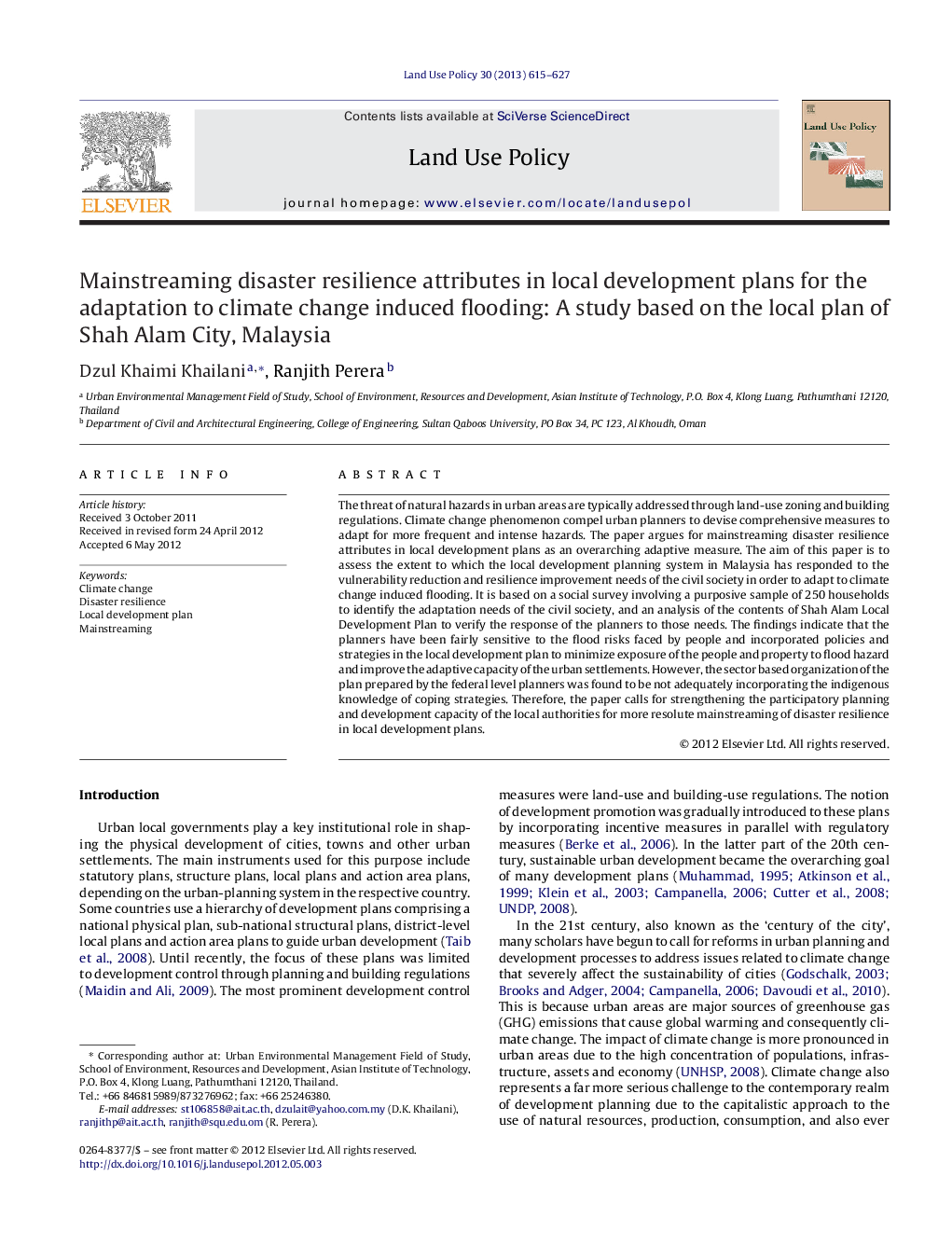| کد مقاله | کد نشریه | سال انتشار | مقاله انگلیسی | نسخه تمام متن |
|---|---|---|---|---|
| 93022 | 160111 | 2013 | 13 صفحه PDF | دانلود رایگان |

The threat of natural hazards in urban areas are typically addressed through land-use zoning and building regulations. Climate change phenomenon compel urban planners to devise comprehensive measures to adapt for more frequent and intense hazards. The paper argues for mainstreaming disaster resilience attributes in local development plans as an overarching adaptive measure. The aim of this paper is to assess the extent to which the local development planning system in Malaysia has responded to the vulnerability reduction and resilience improvement needs of the civil society in order to adapt to climate change induced flooding. It is based on a social survey involving a purposive sample of 250 households to identify the adaptation needs of the civil society, and an analysis of the contents of Shah Alam Local Development Plan to verify the response of the planners to those needs. The findings indicate that the planners have been fairly sensitive to the flood risks faced by people and incorporated policies and strategies in the local development plan to minimize exposure of the people and property to flood hazard and improve the adaptive capacity of the urban settlements. However, the sector based organization of the plan prepared by the federal level planners was found to be not adequately incorporating the indigenous knowledge of coping strategies. Therefore, the paper calls for strengthening the participatory planning and development capacity of the local authorities for more resolute mainstreaming of disaster resilience in local development plans.
Journal: Land Use Policy - Volume 30, Issue 1, January 2013, Pages 615–627